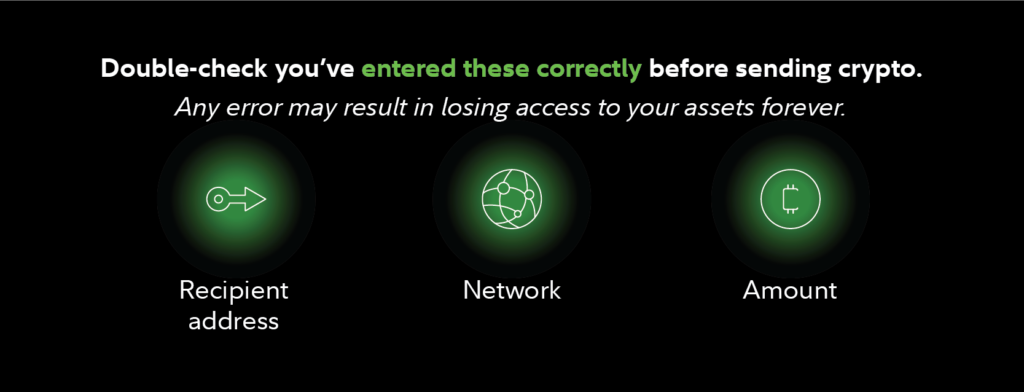Key Takeaways
- One of the main advantages of cryptocurrencies is the ability to transfer them to another wallet without involving a third-party intermediary.
- However, this also means that there is no customer support team to assist if you make a mistake.
- Ensure that you’ve correctly entered the amount, asset, address, and blockchain network before clicking “withdraw.” Assets sent to unsupported network addresses cannot be recovered.

Whether you’re paying for a pizza or sending a gift, crypto users can transfer any amount of cryptocurrency to another wallet without involving a credit card company, bank, or other third-party intermediary.
Crypto enthusiasts argue that this feature makes transactions cheaper and helps protect payments from potential censorship by centralized entities. But how does it work? Let’s explore how to transfer cryptocurrencies.
How to Transfer Bitcoin and Other Cryptocurrencies
When transferring crypto to someone else or another wallet you own, you’ll likely use a crypto exchange, a traditional investment platform, or third-party crypto wallet software. Note that you can only send actual cryptocurrency, not crypto ETPs or ETFs.
The process is generally similar across all platforms. On some exchanges, it’s done through the “Withdraw” function, while others may call it “Send.”
However, be sure to double- or triple-check every step before proceeding, as making a mistake could lead to the irreversible loss of your assets. Specifically, pay attention to the following:
- Recipient Address: Enter the wallet address where you’re sending the crypto. Wallet addresses are typically long strings of letters and numbers, sometimes over 40 characters. Even a single character mistake could lead to your assets being sent to the wrong address, and recovery may not be possible. Ensure the recipient’s address is correct before clicking “Withdraw.” Some exchanges allow you to scan a QR code to simplify entering an address.
- Blockchain Network: If you’re using an exchange, you may need to select a network. Make sure it matches the recipient’s wallet network. If not, you could permanently lose access to your assets. Many exchanges generate new wallet addresses based on the network, so when in doubt, ask the recipient to create a new wallet.
- Amount: Double-check the amount you wish to send. Unlike credit card payments, there is no central authority to reverse a faulty transaction. If you’re receiving crypto, your main task is ensuring that the wallet address you’ve provided is accurate. This is typically handled through the “Deposit” function, where you can create or confirm an existing wallet address.
A good precaution is to perform a “penny test.” Send a small amount (typically under $1) from your wallet, confirm its arrival on the blockchain, and ensure the recipient can see it. Then, proceed with the full withdrawal.
Do I Need to Pay a Transaction Fee When Transferring Cryptocurrency?
While the receiving wallet doesn’t incur transaction fees, the sender typically does. Transaction fees are integrated into the transfer process to reward miners and stakers for updating the blockchain.
These fees are usually displayed by your platform before you confirm and click “Withdraw.” They can vary based on factors like blockchain congestion (i.e., how many others are also making transactions) and the cryptocurrency network you’re using.
To cover these fees, you might need to sell some of your crypto. Additionally, be aware that transferring crypto may have tax implications if you’re sending it to another party.
How Do Bitcoin and Other Cryptocurrency Transactions Technically Work?
First, remember that the balance of each wallet is recorded and updated on the cryptocurrency’s blockchain, a massive public ledger that tracks everyone’s balances.
Let’s consider an example: If Jane wants to send 1 bitcoin to John, she clicks “Withdraw” in her digital wallet. This action notifies the Bitcoin network of the transaction.
However, the transaction doesn’t immediately update the blockchain. It first goes into a waiting queue, where it is picked up by a Bitcoin miner who verifies it with other miners before adding it to the blockchain. Bitcoin transactions typically process within about 10 minutes, though other cryptocurrencies may process much faster.
One way to think of this process is like sending physical mail. After sending a letter, it is collected and delivered to its final destination. Similarly, the blockchain system works through a series of steps before the transaction is finalized.
How Long Does It Take to Transfer Bitcoin and Other Cryptocurrencies?
The transfer time varies by cryptocurrency. Each has its own network with varying transaction speeds. As mentioned earlier, Bitcoin transactions take about 10 minutes, while Ethereum transactions average around 12 seconds as of early 2023. Other cryptocurrencies can take anywhere from nearly instantaneous to several hours to process.
Innovations like the Lightning Network have been developed to speed up transactions, especially for Bitcoin. This network allows transactions to occur in under a minute, if not milliseconds, by temporarily storing transaction data on a separate database before syncing with the Bitcoin network.
However, some transactions could take days to process if the network is congested due to too many people trying to send coins simultaneously.
What to Consider When Transferring Bitcoin and Other Cryptocurrencies
Remember, there is no customer service team for cryptocurrencies. If you make a mistake, such as sending funds to the wrong address, entering an incorrect amount, or selecting the wrong network, there is no way to reverse the transaction—even if you’re using a centralized exchange or platform.
To avoid this, ensure that:
- The wallet address is correct.
- The amount is accurate.
- The correct cryptocurrency asset is selected.
- The correct blockchain network is chosen.
Assets withdrawn to unsupported network addresses cannot be recovered. Always double-check the wallet address with the recipient.
Performing a “penny test” is a way to reduce risk. Withdraw a small amount, confirm it on the blockchain, and verify that the recipient can see it in their account. Once confirmed, proceed with the full withdrawal.
Taking these precautions can help reduce the likelihood of losing access to your crypto assets.
Final Thoughts on Cryptocurrency Transfers
Keep in mind that cryptocurrencies are highly volatile and more susceptible to market manipulation compared to traditional securities. Crypto holders do not have the same regulatory protections as those who hold registered securities. Additionally, the regulatory environment for cryptocurrencies remains uncertain.
Cryptocurrencies are not insured by the Federal Deposit Insurance Corporation (FDIC) or the Securities Investor Protection Corporation (SIPC). Only buy or transfer crypto with funds you’re willing to lose.


